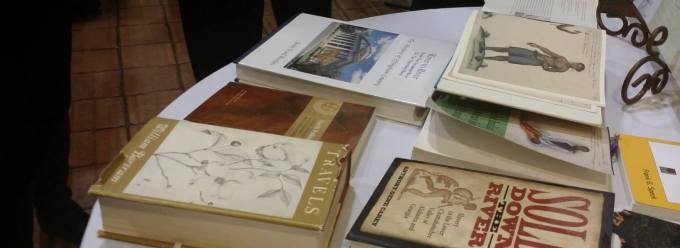Schedule Records
Church Records
1. Church records may include births, christenings, marriages, deaths and burials. Be sure you have the correct church/religious denomination. If you’re not sure, search the churches
closest to home first and then broaden your search in ever-widening circles.
2. Check for cemetery records with the church, sexton and/or funeral directors. Visit the cemetery and take a picture of the tombstone. Check the obituaries in that time frame.
Court Records
1. An "executor" is named by the testator and is required by the court to post a bond. An "administrator" is appointed to handle the affairs of one who dies intestate (without a
will).
2. Probate records refer to wills, inventories, letters of administration and guardianship. They are usually held at the county courthouse unless archived and they are indexed by the name
of the testator.
3. There are three types of wills: Attested, Holographic and Nuncupative. The attested will is the most common and is prepared for the testator. A holographic will is written by the
testator himself. A nuncupative will is the deathbed wishes of the testator, recorded by a witness present at the bedside. All wills must be witnessed.
Evidence
1. Direct evidence speaks to the point in question.
2. Indirect evidence gives facts from which you can come to a conclusion.
3. Primary evidence is personal testimony or a record created shortly after an event by a person with personal knowledge of the facts. A Birth Certificate for example.
4. Secondary evidence is copies or compiled from other sources written from memory long after the event has occurred. A Death Certificate can contain both primary and secondary source
information.
Federal Records
1. The National Archives and Records Administration (NARA) in Washington, DC and its Regional Branches, is the principal repository for records relating to the US federal government. These include the original paper copies of the federal census, all pre-World War I military records, Native American records, military service and pension records, naturalization records, ship passenger lists, land-entry case files, and homestead and bounty land warrant records. NARA's website is the place to begin research for federal records.
2. General Land Office is now called Bureau of Land Management of the United States Department of Interior. Some federal land records are here, some in the National Archives and some are
in state and university libraries. Public domain land states are largely available on the Bureau of Land Management, General Land Office-Eastern States free website.
3. USCIS (U.S. Citizenship and Immigration Services) was formerly known as INS (Immigration and Naturalization Service). Searching for Immigration and naturalization records is essential
in genealogy research. The website which allows patrons to order index searches or record copies is at: CISHistory.Library@dhs.gov. Payment is required for searching the indexes, and then payment
again to obtain copies of records located. 20th century records include: Certificate Files (C-Files); Registry Files; Visa Files; Alien Registration and A-Files.
4. National Personnel Records Center, St. Louis, MO., has U.S. military records for World War I or later. World War I draft registration cards are online, along with some of the World War
II enlistment records. Some of the records in St. Louis were destroyed by fire, and they ask that you send the request for records back a second time since the first reply is computer-generated.
5. Library of Congress, Washington, D.C. has manuscripts, publications and microfilms of a wide range of materials useful to genealogical research. Their website is free and easy to
use.
6. The National Genealogical Society, Washington, D.C. has a genealogical course available for national accredation and sells both supplies and reprinted genealogies and other books.
7. Social Security Administration has made the Social Security Death Index freely available on multiple websites. When first entered the records began with 1962 deaths, but now there are
some listed earlier than 1962.
Hometown Records
1. City Directories provide names and occupations of town residents and much local business information.
2. It's very important to check maps. Boundaries change over time. Be sure the area where you think your ancestors resided is actually the area where they were.
3. Newspapers are wonderful hometown records. In addition to looking for obituaries, be sure to look for articles about special events... births, baptisms/christenings, weddings and
pre-nuptial events (bridal showers, etc.), birthdays (parties), anniversaries, etc.
4. Town and county histories can be invaluable to form a picture of your ancestors in the time they lived in the area.
5. Be sure to check for a town or county historical society in the area you are researching. Know their hours of operation and their visitor rules.
6. Be sure to understand any fees that may be required for copies of any records found.
7. The local library may have copies of old city directories produced my the municipality.
Immigration
1. Immigration is entering a country where you are not a native to take up permanent residence. Emigration is leaving a country where you have been a citizen.
2. Major ports of entry were Baltimore, Boston, New York, Philadelphia and New Orleans. There were other ports that were not considered major ports.
3. In 1820 the Federal Government began requiring ship manifest lists but the early years can be difficult to locate.
4. The 1900 through 1930 censuses lists the individual's year of immigration to the United States. Don't be surprised if they are all different dates.
Interviews
1. Make a list of all living relatives before you start your genealogy research. Interview as many of them as possible. Be prepared with a list of questions. Use a tape recorder for the answers or take very good notes. Respect the person’s privacy.
2. Consider using video tape for your interviews. Those being taped must approve this type of interview.
3. When writing to a relative for information, make specific requests. Don't ramble! Offer to share your information.
Land Records
1. Many legal instruments other than deeds appear in deed books. They include Bills of Sale, Prenuptial Agreements, Powers of Attorney, Contracts, Affidavits, Wills and Inventories and Voter and Jury Lists.
2. There are various types of deeds to property. The most common are the warranty deed which transfers property with assurance of good title and the quitclaim deed which transfers one
person’s interest in the property without guarantee of good title.
3. When looking at deed indexes, be sure to look at both the "Grantor Index", an index to those selling the land and the "Grantee Index", an index to those buying the land.
4. FEDERAL Land States were created from public domain, land the United States bought or acquired. The land was divided into territories as it became populated. Survey is done according
to the rectangular system.
5. STATE Land States are states that owned and distributed their lands. This includes the original 13 colonies, Kentucky, Maine, Tennessee, Vermont and West Virginia, Hawaii and Texas.
They use "metes and bounds" to survey the land.
Organization
1. Organize from the beginning in a system that suits your needs... but in which you can quickly and easily find information when you want it.
2. Set up "proof files." These are your original documents that NEVER travel with you. Travel with copies if needed. Digital copies are easy to carry with you.
3. Digital copies, sometimes called "portable files", are copies of your original documents, family group sheets, notes, pedigree charts, etc.
4. Use a good genealogical software package to maintain your records and your digital files.
Probate
1. Probate records refer to wills, inventories, letters of administration and guardianship. They are usually held at the county courthouse unless archived and they are indexed by the name of the testator.
2. There are three types of wills: Attested, Holographic and Nuncupative. The attested will is the most common and is prepared for the testator. A holographic will is written by the
testator himself. A nuncupative will is the deathbed wishes of the testator, recorded by a witness present at the bedside. All wills must be witnessed.
3. A person who dies "intestate" dies without a will.
4. An "executor" is named by the testator and is required by the court to post a bond. An "administrator" is appointed to handle the affairs of one who dies intestate (without a
will).
Sources & Documentation
1. Remember to document everything you find on your ancestors. Undocumented genealogy is mythology. Most genealogy software will get you through the basics, Elizabeth Shown Mills has authored several very good books on the subject
2. The Research Log is very important for the time when you share you data or decide to publish your work. You will need to know your sources for obtaining each piece of information. Be
VERY specific with your information quoting authors, titles, pages, publishers, etc
3. Use a Correspondence Log for both regular and electronic correspondence. This includes the name and address of the person to whom you have written, what you requested, the date the
request was sent, and a column for the outcome. Remembering every letter written is impossible. Follow up if you don’t get an answer within a month.
4. Primary evidence is personal testimony or a record created shortly after an event by a person with personal knowledge of the facts.
5. Secondary evidence is compiled from other sources written from memory long after the event has occurred.
6. Direct evidence speaks to the point in question. Indirect evidence gives facts from which you can come to a conclusion.
Vital Records
1. Vital Records include birth, marriage, divorce and death records.
2. Death Records can be the least accurate records depending upon the knowledge of the person reporting the information about the deceased. How much do your children know about you?
3. Marriage Records may only be records of the wedding. However, you may also find the Application for Marriage completed by the bride and groom-to-be. Marriage records may also be
corroborated with church records. Check everything for correctness. There could also be a newspaper account of the wedding.
4. Birth Records can be difficult to obtain because they can be used for so many purposes. You may be required to provide proof of relationship and proof of the person's death.
5. Vital records and event information are more reliable when they are recorded near the time of the event. The longer the time from the event occurrence that the record is made, the less
accurate it may be based on the memory of the person involved.
6. Names for causes of death have changed over time. Try to match the old name with the current medical name.





